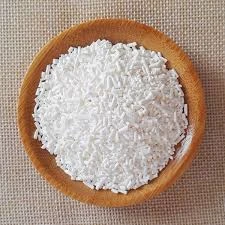
Benefits of Liquid Phosphorus Fertilizer for Enhanced Plant Growth and Soil Health
The Benefits and Uses of Liquid Phosphorus Fertilizer
Liquid phosphorus fertilizers have emerged as a vital component in modern agriculture due to their ability to provide an essential nutrient in an easily absorbable form. Phosphorus is one of the three primary macronutrients needed for plant growth, alongside nitrogen and potassium. Utilizing liquid phosphorus fertilizers can significantly enhance agricultural productivity, leading to healthier crops and improved yields.
Importance of Phosphorus in Agriculture
Phosphorus plays several critical roles in plant development. It is a key element in the formation of DNA, RNA, and ATP, which are vital for energy transfer within the plant. Furthermore, phosphorus contributes to root development, flowering, and fruiting, making it essential for overall plant health. A deficiency in phosphorus can lead to stunted growth, poor root systems, and reduced crop yields. This is where liquid phosphorus fertilizers come into play.
Advantages of Liquid Phosphorus Fertilizers
One of the major advantages of liquid phosphorus fertilizers is their high availability and solubility for plant uptake. Unlike granular fertilizers, which may take time to dissolve and become bioavailable, liquid formulations can be absorbed quickly by plants. This is particularly beneficial during critical growth stages when plants have heightened nutrient demands.
Moreover, liquid formulations can be applied using various methods, including soil drenching, foliar spraying, and fertigation (application through irrigation systems). This versatility allows farmers to target specific crops or adjust their application based on environmental conditions, ultimately leading to more efficient nutrient management.
Environmental Considerations
liquid phosphorus fertilizer

While the advantages of liquid phosphorus fertilizers are significant, it is important to approach their use with care to minimize environmental impact. Phosphorus runoff from over-application can lead to water quality issues, such as algal blooms in nearby bodies of water. To avoid these issues, farmers should adopt best management practices (BMPs), such as soil testing to determine existing phosphorus levels and applying fertilizer according to specific crop needs and growth stages.
Additionally, precision agriculture techniques can help optimize fertilizer application, ensuring that the right amount of phosphorus is applied at the right time and in the right place. This not only boosts crop production but also protects water quality and promotes sustainability.
Application Techniques
When using liquid phosphorus fertilizers, proper application techniques can enhance their effectiveness. It is crucial to apply these fertilizers in conjunction with other nutrients, as phosphorus works best when balanced with nitrogen and potassium. Foliar applications can be particularly effective during early growth stages, while soil applications can set the foundation for robust root development.
Farmers should also pay attention to weather conditions when applying liquid phosphorus fertilizers. For example, applying fertilizer before a forecasted rainfall can increase the risk of runoff, whereas applying it during dry periods can enhance soil absorption. Thus, careful planning is essential to maximize the benefits and minimize the risks associated with phosphorus applications.
Conclusion
Liquid phosphorus fertilizers provide a powerful tool for enhancing crop production and maintaining soil health. By delivering this essential nutrient in a readily accessible form, they support robust plant development and higher yields. However, mindful application and proper management are crucial to prevent environmental impacts. As agriculture continues to evolve, the effective use of liquid phosphorus fertilizers stands out as a sustainable practice that can meet the challenges of modern farming while ensuring a productive and healthy ecosystem.
-
The Safety Challenges of Ammonium Nitrate FertilizerNewsJun.26,2025
-
The Critical Role of Mining ChemicalsNewsJun.26,2025
-
Shelf Life of Glacial Acetic Acid Food GradeNewsJun.26,2025
-
Enhancing PVC Longevity with 1,2,3-Benzotriazole InnovationsNewsJun.26,2025
-
China’s Dominance in Food Additive ProductionNewsJun.26,2025
-
Can Aluminum Hydroxide Replace More Toxic Alternatives?NewsJun.26,2025
-
PE and PP Plastics with Benzotriazole AdditivesNewsJun.12,2025
Hebei Tenger Chemical Technology Co., Ltd. focuses on the chemical industry and is committed to the export service of chemical raw materials.
-

view more DiethanolisopropanolamineIn the ever-growing field of chemical solutions, diethanolisopropanolamine (DEIPA) stands out as a versatile and important compound. Due to its unique chemical structure and properties, DEIPA is of interest to various industries including construction, personal care, and agriculture. -

view more TriisopropanolamineTriisopropanolamine (TIPA) alkanol amine substance, is a kind of alcohol amine compound with amino and alcohol hydroxyl, and because of its molecules contains both amino and hydroxyl. -

view more Tetramethyl Thiuram DisulfideTetramethyl thiuram disulfide, also known as TMTD, is a white to light-yellow powder with a distinct sulfur-like odor. It is soluble in organic solvents such as benzene, acetone, and ethyl acetate, making it highly versatile for use in different formulations. TMTD is known for its excellent vulcanization acceleration properties, which makes it a key ingredient in the production of rubber products. Additionally, it acts as an effective fungicide and bactericide, making it valuable in agricultural applications. Its high purity and stability ensure consistent performance, making it a preferred choice for manufacturers across various industries.











